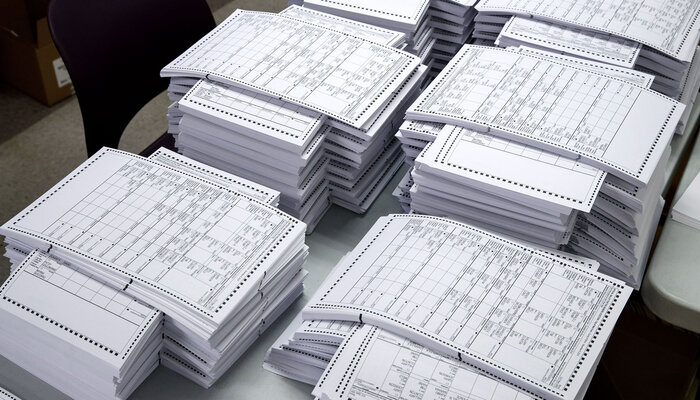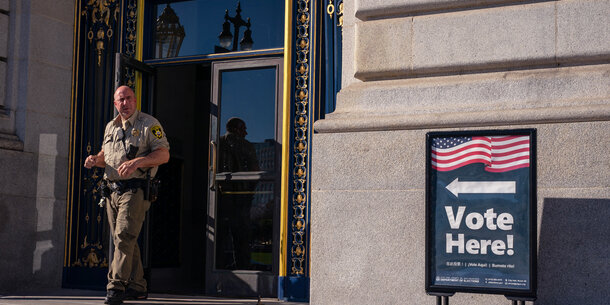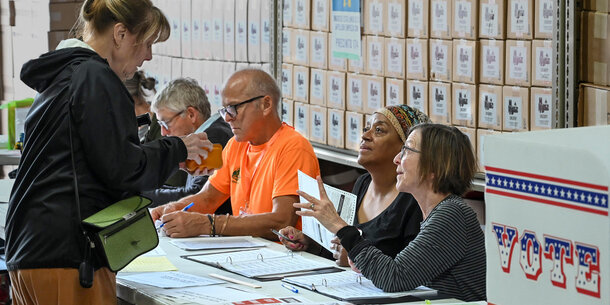Even with unprecedented challenges and historic turnout in 2020, election officials across the country administered an election that the federal government’s cybersecurity agency called the “most secure in American history.” Many factors led to this result, from close coordination and preparation between federal, state, and local agencies, to the expansion of voting options that reduced stress on election systems. But one of the most significant was the rapid transition in recent years to voting on paper ballots, a trend that is set to continue into the 2022 and 2024 elections.
Experts widely recognize paper ballots as one of the most important security measures that states can adopt. When selections are recorded on paper, voters can easily verify that their ballot accurately reflects their choices. Paper ballots also facilitate post-election audits, where election workers can check the paper records against electronic vote totals to confirm that voting machines are working as intended.
For example, by replacing paperless voting machines before the 2020 election, Georgia was able to conduct a hand-count of every ballot cast, confirming the presidential election outcome and dispelling conspiracy theories about the state’s voting machines. This would not have been possible in Georgia as recently as 2018.
Record numbers of paper ballots in 2020, with more states set to transition to paper
Nationwide, we estimate that 93 percent of all votes cast during the 2020 election had a paper record, whether filled out by hand or printed by a machine for the voter to review before casting their ballot (based on data from Verified Voting and the Election Assistance Commission’s 2020 Election Administration and Voting Survey). The increase — up from 82 percent in 2016 — was largely due to states and local jurisdictions replacing antiquated paperless voting machines, often with the help of federal funding. And even where states were not able to replace this equipment prior to the 2020 election, increased mail voting ensured that a higher share of voters were marking their selections on paper ballots.
The transition to paper ballots should continue in upcoming elections, as the handful of states that still use paperless voting machines work to phase out this unsecure equipment. In the past year, Indiana, Kentucky, Mississippi, and Texas have all passed laws to require voting systems to produce a paper record of every vote, or moved up the deadline for doing so. A similar bill recently passed both houses in Tennessee.
Lack of funding and the push for internet voting threaten progress
Could anything stop this progress? Perhaps. New Jersey serves as a cautionary tale — while the state has required paper voting systems for over a decade, inadequate funding for upgrades has prevented counties from implementing this requirement. Already, some counties in states with recent paperless voting bans are responding by retrofitting outdated equipment rather than replacing it with modern technology, due to the high cost of new machines. These shortcuts raise security concerns of their own, as older equipment is more likely to fail, more difficult to maintain, and less likely to have the security features we expect of machines today. The Brennan Center and Verified Voting estimate that it will cost about $105 million to fully replace all remaining paperless voting machines nationwide.
At the same time, there is a movement in some corners to get states to adopt or expand risky internet voting methods that fail to provide a reliable paper trail. Leading experts in cybersecurity, computer science, and election infrastructure — along with federal cybersecurity officials — continue to warn that internet voting presents a “significant security risk,” and that current technology cannot guarantee secure and reliable online voting.
Acknowledging these risks should not diminish the significant barriers that voters with disabilities and certain military and overseas voters face in exercising their fundamental right to vote. But rather than putting the privacy and accuracy of anyone’s vote in jeopardy, states should implement secure and proven processes to accommodate these voters, including through improved electronic ballot delivery and convenient ballot return options.
Long term, Congress and federal agencies should develop national standards for online voting. It is possible that we can one day develop online systems that are secure, accurate and protect voter privacy, but that day has not yet come. The public should have more than vague promises of security from private vendors looking to sell a product for something that is so central to our democracy and national security.
In the wake of massive disinformation campaigns about “rigged machines,” the supposed need for partisan election reviews, and other forms of election denial rhetoric, it’s more important than ever that voters have confidence their votes will be accurately counted. Paper ballots provide such assurance.
States must act now to implement secure and resilient voting systems, and Congress should ensure these states have the resources they need to complete this transition as soon as possible.




